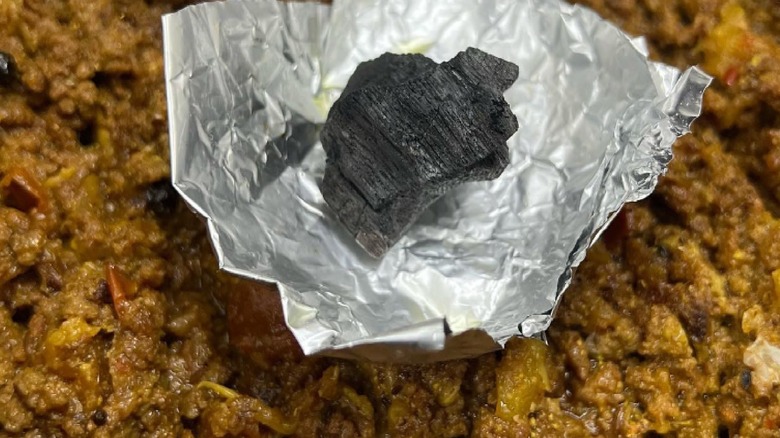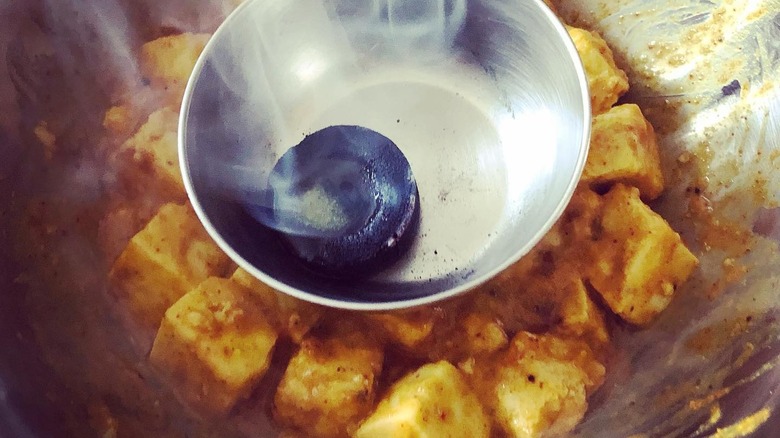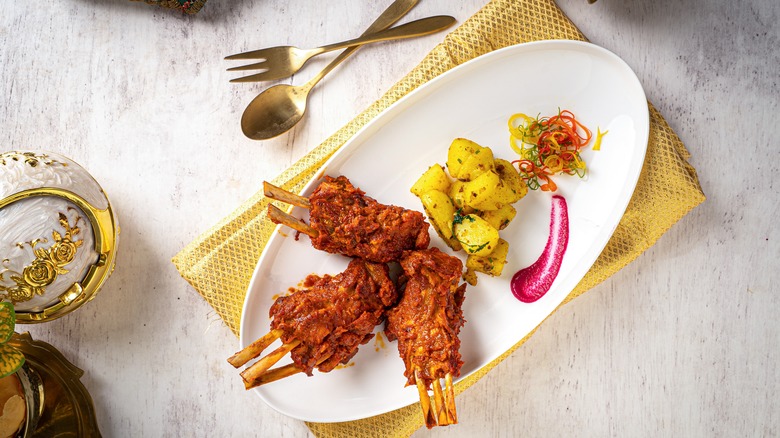Embrace The Dhungar Method To Add Smoky Flavor To Any Dish
Although the taste of a food is associated with how it affects our taste buds, our sense of smell is likely a more dominant factor. This means delivering a flavor can be achieved not only through edible ingredients, but through aromatic particles for the nose, as well.
In India, a technique known as the dhungar method accomplishes precisely such an aim. Brought to the subcontinent during the Mughal Empire, this century-old method imbues food with a delectable smoky essence. The methodology is straightforward — a small piece of lit coal is placed into a bowl of ghee. Although separated from the food, the wafting butter is contained in the same vessel, which adds a complex flavor that melds the dish together. The dhungar technique doesn't cook the food; it's more like a finishing perfume.
Since it's not a heat application, the dhungar method is wonderfully malleable. It's traditionally employed with everything from yogurt-based raita to chicken curry and dal. Let's dive into how to use this aromatic method in the home.
How to utilize the dhungar method
The dhungar method can be applied to a myriad of dishes. Regardless of the application, make sure the food is already prepared to completion prior to reaching for the coals. And whatever vessel it's in, there needs to be a lid to trap in all the smoke.
As with other charcoal cooking methods, burnt wood is an ingredient in and of itself. Definitely skimp on the lighter fluid; it'll ruin the delicate aroma. Remember to factor in the safety of the environment. When there are flammable elements in the surrounding area, take the process outside and utilize a blow torch. If you're in a spacious kitchen with gas burners, the method can also take place over a stove. The goal is to generate some red embers and let the exterior of your coals turn to ash with around five minutes of burning time.
Once ready, place the coals into a small metal bowl. Dollop in two generous spoons of ghee, then deposit the smoking container into the cooking vessel and close the lid. It'll take around 10 to 15 minutes for the coal to deposit its delectable smoky flavor.
Dishes prepared with the dhungar method
The smoky flavor fits well in a variety of foods, but it infuses best through a specific medium — fat. As a result, dhungar will work especially well in meat-based dishes, like a mutton biryani or lamb kebab, as well as a range of dishes with chicken or dairy components. Alternatively, protein doesn't have to be the main star — you can simply add a fat like bacon or lard to the medium of choice to pick up some of the smoke.
Raita's a traditional Indian dish that employs the dhungar method. The fatty milk curds beautifully infuse with the smoke, especially when complemented by a fresh dose of cucumber and tomato. Another common preparation infuses paneer with smoke; a little smokiness amplifies the fresh cheese.
Dhungar also functions seamlessly with less traditional applications. It can reinvent a classic mac and cheese or simply add a new note to roasted Brussels sprouts. After all, it's a finishing aromatic, not a striking interference into a dish's identity.


